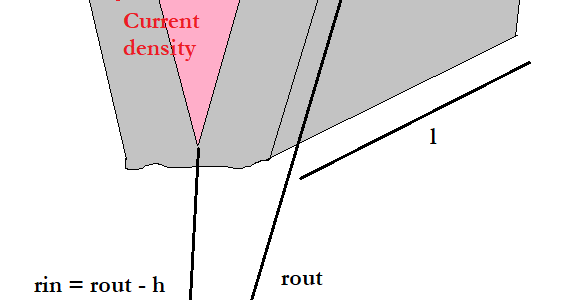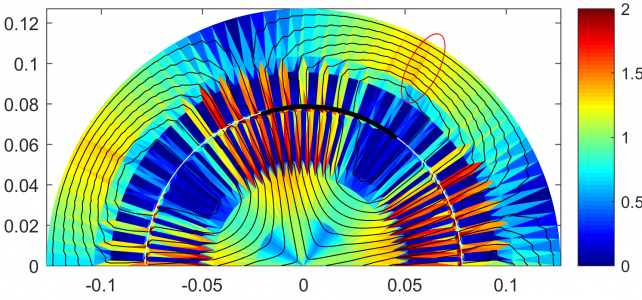The split ratio, defined as the rotor OD divided by the the stator OD, is one of the key dimensions defining the performance of an inrunner electrical machine. For a (relatively) fixed OD and stack length, it’s probably the most…
Finding the operating point of a motor
Finding the operating point of an electric motor is no longer as simple as it used to be. I mean, in the past, or in the textbooks and course slides we often see during our studies, it was simple. Just…

Axial versus Radial Flux – First Principles
Which is better – axial or radial flux? The correct answer is complex and depends on a million things, but here’s a first-principles comparison.

Computing Back-EMFs with space vectors
Here’s a no-brainer tip for you: space vectors are useful when designing electric motors. Duh. However, there’s one specific detail you might not know: they are also extremely handy when computing the back-EMF waveform, or induced no-load voltages. Specifically, they…
Computing Flux Linkages in 2D
How to compute flux linkages of a coil, using the results of 2D finite element analysis. Nice to know information, with occasional professional uses.

Pole count – The Good, the Bad, and the Ugly
Electric motors come with various number of poles. But why is that the case, and what are the benefits and drawbacks of an increased number?

Shear Stress versus Lorentz Force
Why two popular torque formulas, based on Lorentz force and magnetic shear stress, are in fact the SAME formula and thus yield identical results.

Axial-Flux Machines – Part 2
How does the peak torque capacity of an axial-flux motor compare to radial-flux. Read here to find out, kinda.

Axial-Flux Machines – Part 1
they, really? And are they as good as promised? Read to find out!

SRM vs SynRM – Important Dimensions
What are the most important dimensions for switched and synchronous reluctance motors? The same ones as for all motors, luckily – click for details!